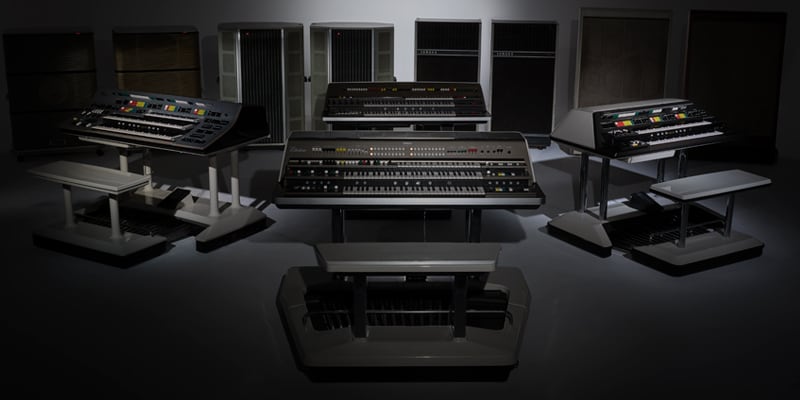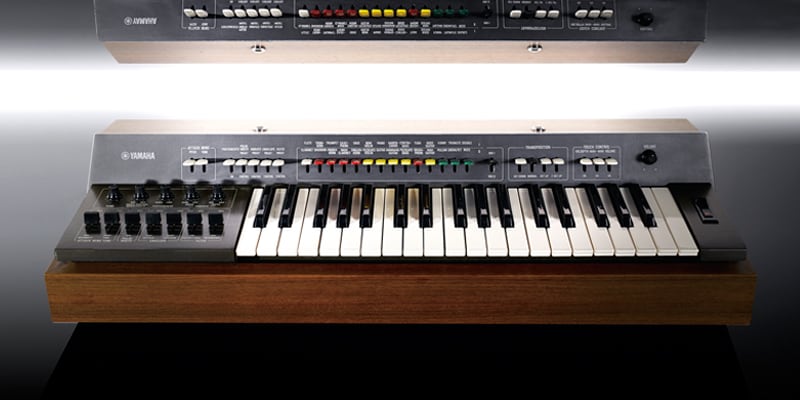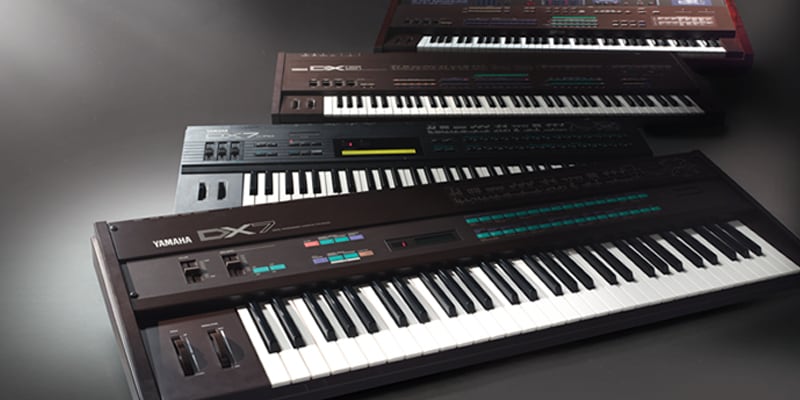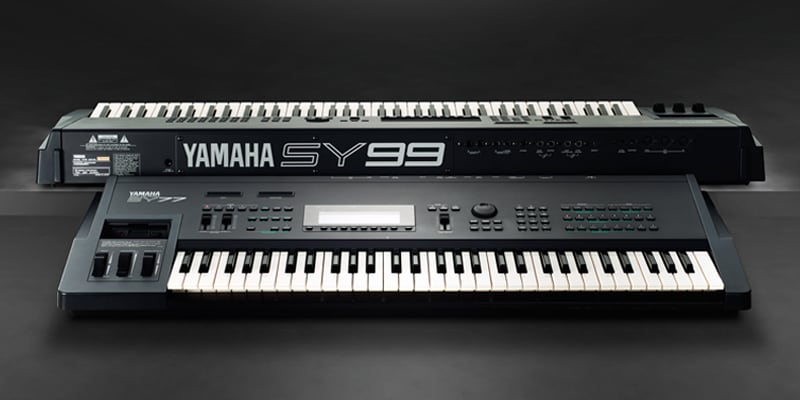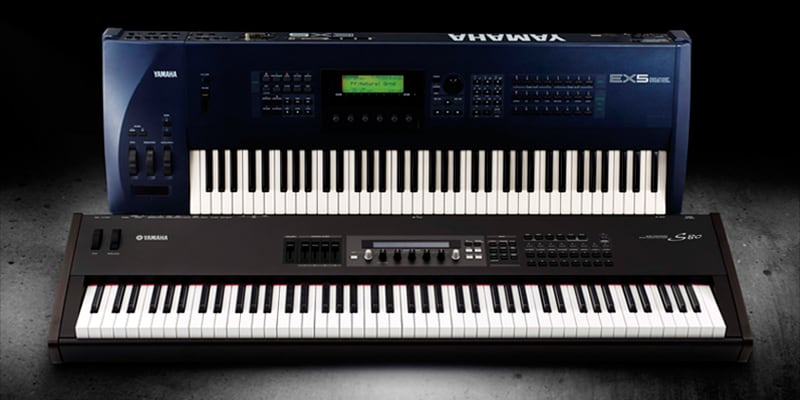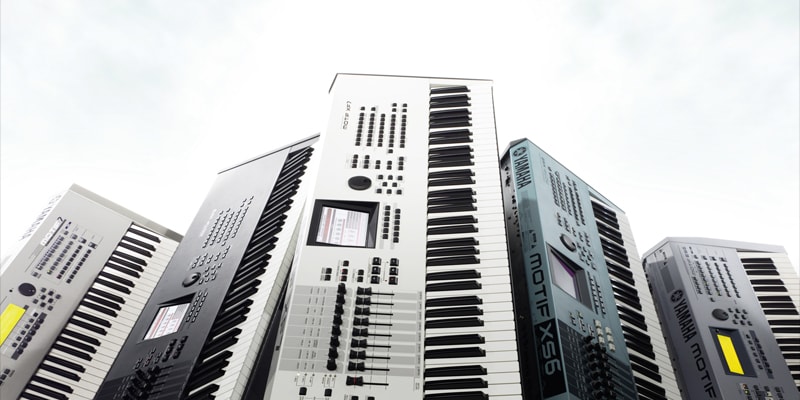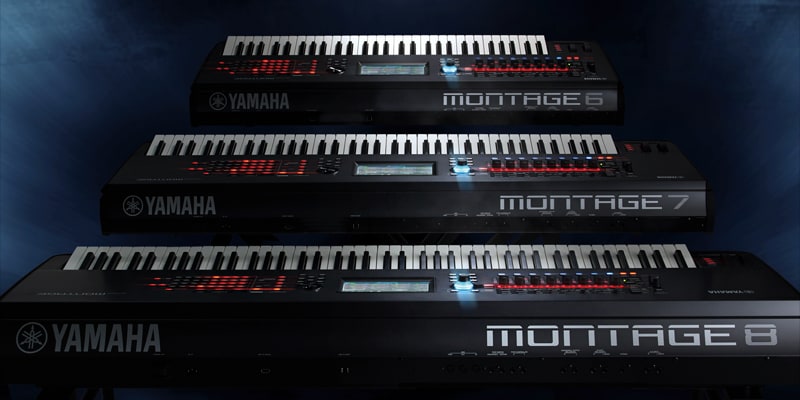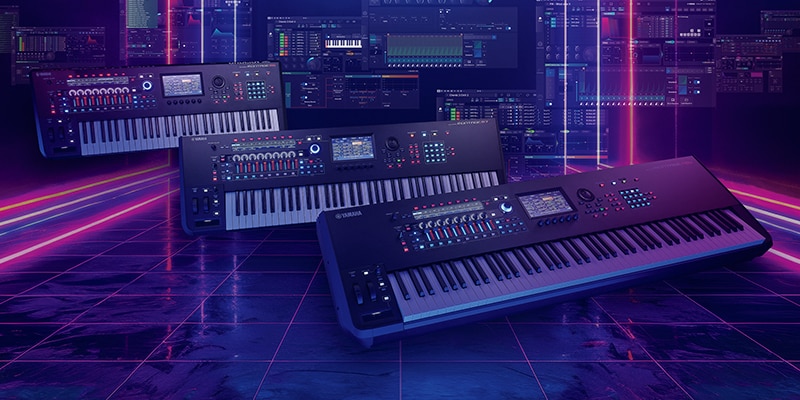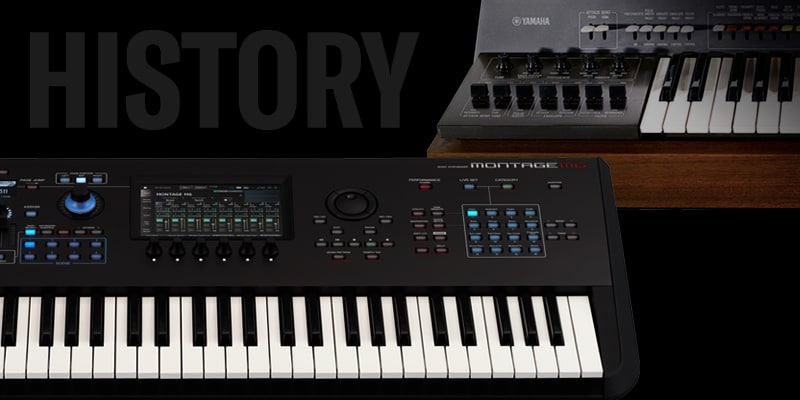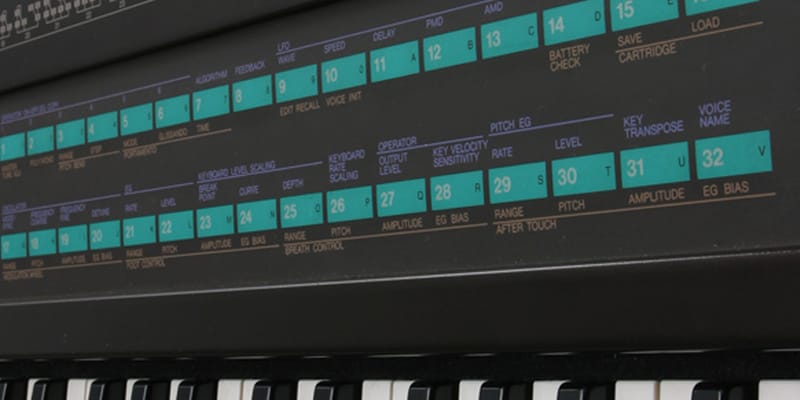Chapter 0: Intro

The Yamaha Electone GX-1, an electronic organ employing a synth-style approach to tone generation, debuted in January 1975. Positioned as the new flagship of our Electone Series, the GX1—the second Yamaha synthesizer—was described as a “dream machine.” This was for good reason. As we’ll see later in Chapter 1, a prototype called the GX-707 was completed in 1973, but even before this, an elaborate story unfolded as Yamaha developers sought to achieve a dream machine, capable of the highest possible levels of musical expression. Many of the technologies behind today’s synthesizers were developed much earlier than most people realize. In this chapter, we’ll look at how Yamaha poured everything into the development of successive Electones as the dawn of the true synthesizer approached.
The Legendary EX-21


It was 1959 when Yamaha (known as “Nippon Gakki” at the time) introduced our first ever all-transistor electronic organ. This musical instrument, the D-1, was the very first Electone. New Electones were released practically every year over the next few years, and in the mid-sixties, president Genichi Kawakami called upon the company to draw on all its skills and knowhow to create the world’s greatest electronic musical instrument. Four prototypes were built, ultimately leading to the development of the EX-21 in 1968, which was released both at home in Japan and overseas the following year. This instrument illustrated the commercial potential of the first Electone designed specifically for stage performance, the EX-42, which was scheduled for release later in 1969. In anticipation of its exhibition at the 1970 World Exposition in Osaka, however, the EX-21 was put through several additional rounds of development and testing. With single-block castings used for the instrument’s frame, pedals, and bench, several prototypes apparently cracked and broke before four could be built.
The EX-21 used a hybrid tone generation system, blending the top octave with independent oscillators. This system did not, however, fit inside the instrument itself and had to be housed in a separate, rack-like tone generator unit, connected by a special thick cable. The combined weight of the cast-metal body (which was prone to cracking), the tone generator unit, and tone cabinets was around 1,750 pounds. Needless to say, this was not an instrument that was easily moved. Nevertheless, a world tour of the EX-21 played by Koichi Oki and Yoshifumi Kirino commenced in May 1969 at a musical instrument show in Las Vegas. At each tour stop, audience members were floored by the instrument’s remarkable sound and expressive capabilities.

The tour’s player, Yoshifumi Kirino, had an EX-21 set up in his home for around two weeks to experiment with sounds. With the instrument in one room and the tone generator rack connected by cable in another, every time he pressed a registration button to switch sound presets, a loud mechanical clashing noise came from the tone generator. This was apparently caused by the action of relay switches, suggesting that EX-21 tones were changed mechanically. In terms of visual styling, however, Kirino said that the instrument looked like something futuristic from outer space.


Considering the design, weight, and tone-switching system, it’s probably no surprise that the EX-21 had an astronomical price tag—roughly $139,000 at the time, or around $696,000 in today’s terms. Meanwhile, the model name came from adding an “X” to the identifier of the E-3, which was the top Electone on sale at that time, and then appending the number “21” in anticipation of the 21st century—just over a few decades away. Incorporating all the cutting-edge technologies and ideas of the late sixties, the EX-21 represented the pinnacle of the Electone family. It’s fair to call it the genesis of dream machines such as the GX-1.
Independent Oscillator and Top Octave Approaches
The number of oscillators that a synthesizer has at its disposal for tone generation is intimately tied to the number of sounds that it can output simultaneously. On a four-note polyphonic instrument, for example, chords can be created by using each of the four oscillators to play different frequencies. Yet early Yamaha Electones achieved full polyphony by allocating oscillator tones to the instrument’s keys as needed. This was done by employing two different approaches—namely, the independent oscillator method, and the top octave method.
As its name suggests, the independent oscillator method gives each key its own unique oscillator so that they can be played together to create harmonies. (For example, a 40-key keyboard needed 40 independent oscillators.) This can get expensive very quickly, whereas the alternative top octave method requires only an octave’s worth of oscillators. Each oscillator produces the highest playable frequency for its corresponding note, and by leveraging the fact that halving the frequency drops the pitch by exactly one octave, the fundamental notes are converted into lower octaves using a frequency divider circuit through simple integer division. Thus, with just twelve oscillators—one for each note in the chromatic scale—it is possible to simultaneously produce notes for every key on the keyboard.


Early Electones used constant oscillation for both methods. This meant that every oscillator always produced a tone when the instrument was turned on, but they were only sent to the amplifier when the right key was pressed. However, this particular approach was prone to sound leakage: sound could be heard even when the instrument was not being played. Engineers were often needed to make adjustments.
In true dream-machine fashion, the EX-21 employed a hybrid system that combined both tone generation methods. In specific terms, it took the top octave system of our E-1 (worth $4,456 in 1962) and integrated it with the independent oscillator system of our F-1 (worth $15,317 in 1964).

First Stage Model, the EX-42

In essence, the EX-21 was succeeded by the EX-42, which was developed to be released straight to the public instead of being prototype tested. To this end, tone generation was cut back to just top octave, helping to get the instrument weight down to a nimble 397 pounds.
In terms of Voices, the EX-42 was noteworthy for its nine tone levers ranging from 16 feet to 1 foot for organ flutes (also called pipe organs), including other tone levers for Voices such as brass and strings. It could also produce percussive tones and sounds with a decay stage like piano and harpsichord. The EX-42 also came with groundbreaking functions that would come later in full-fledged synths, such as a special tone called Wave Motion that could be pitch shifted relative to other tones on the upper keyboard. The result of combining these tones was a unique undulating sound. Certain tones were also touch responsive. Although limited in number, they provided clear evidence of the level of commitment of our developers. Additionally, the upper, lower, and foot keyboards were equipped with tone levers called couplers that allowed voices created on one keyboard to be mixed with those of another, foreshadowing the layering feature of modern synthesizers.
The EX-42 had similar solo and portamento keyboards to the EX-21. The solo keyboard could be used to play a total of seven voices—four monophonic and three polyphonic. Players could mute the monophonic voices or apply vibrato by wiggling the keys left and right. Additionally, solos with chords and harmonies could be played using the Chimes, Vibraphone, and Bell-Lyra polyphonic voices. Positioned to the left of the solo keyboard was a portamento keyboard. Similar to a ribbon controller, this keyboard included six different was capable of producing its own sound. Harnessing six different voices, players could add sound effects and smooth pitch transitions. What’s more, it had an auto-mute mode and reverb, which was particularly effective for creating cosmic, otherworldly sounds. This portamento keyboard later reappeared in the GX-1 and the CS-80.
The EX-42 was the first Electone to come with auto-rhythm patterns—13 of them to be exact—and, like all previous Electones, it had four percussion buttons. The instrument was also equipped with four buttons between the upper and lower keyboards for recalling voies – or what’s known as “registration memories” today. Each one of these buttons could be used to save and recall all upper, lower, and foot keyboard settings, and the player could also switch registrations by foot using any of four toe pistons that were linked to the registration buttons between the keyboards.


Among other controllers, the EX-42 included a pull-out preset board that could be used to independently adjust the pitches of the solo, upper, lower, and foot keyboards. In addition to tuning the keyboards to concert pitch, these knobs could shift the pitches of the keyboards to create a distinctive pulsating audio effect.
Although top octave would ultimately be replaced by other tone-generation technologies, the sound creation capabilities of the EX-42 are so revolutionary it’s astounding that that this instrument is now over 50 years old. It’s no exaggeration to say that the GX-1 only existed because the EX-42 came first.
As a final thought on the EX-42, the following passage from an original booklet may help shed some light on how Yamaha saw the instrument: “Composers and performers strive to lead the times and achieve distinctive forms of impression. Musical instruments naturally evolve in response, although the reverse can also be true. In either case, the birth of any instrument adds a new world of expression to the annals of music history, and the ambitious Yamaha Electone EX-42 is no exception. As a perfect integration of advanced electronic technologies and the world’s best musical craftsmanship, the EX-42 greatly expands the boundaries of both the musical instrument and artistic expression. It is fully capable of meeting the demands of composers and artists in a vast array of venues, such as large-scale concert halls, broadcast stations, restaurants, and recording studios. It is also a highly versatile partner in creating accompaniment music for TV shows, advertisement tracks, and electronic music. We are extremely proud of the new EX-42 and hope you too can appreciate its true potential.”
GX-1 Opens a Path to New Musical Expression


After completing work on the EX-21 and EX-42, Yamaha turned its attention to a new generation of Electones with the aim of achieving more natural sounds. One of these new instruments ultimately took form as the Electone GX-1.
A predecessor of this instrument, the GX-707 prototype was completed in 1973 and developed an excellent reputation thanks to demo performances at NAMM, Musikmesse, and various events in Japan. Further improvements to this prototype only strengthened the conviction that the GX-1 needed to be released.


In marked contrast to earlier model Electones, which had used sustained, unchanging tones as the basis of sound creation, the GX-1 employed a technology called group-controlled voltage in line with our Living Sound design concept. Often called the polyphonic analog synthesizer approach, group-controlled voltage made it possible for the instrument to produce sounds that changed over time.
Individual notes now shone brilliantly and chords resonated vibrantly. Gone were the tone levers of earlier Electones. They were replaced by preset voices with timbre changes and balance settings stored in advance on the instrument. The player would simply choose the best one to suit the music by pressing the corresponding tone selector in much the same way as we choose patches on today’s synths.
The GX-1 offered the following distinctive features not found on earlier Electones.
1. Analog synthesis used for tone generation
2. Up to 18 note polyphony, with eight each for the upper and lower keyboards, and one each for the solo and foot keyboards
3. Preset voices added using Tone Modules, and the ability to edit voices
4. Pitchbend, sustain, resonance, and reverb for greater levels of expressivity
5. Enhanced touch response

The GX-1 is classed as a synthesizer because its tone-generator contained an analog synthesizer comprising VCOs, VCFs, and VCAs. It could also control changes in tone over time, which is fundamental to the creation of sounds. This type of evolving sound could not easily be created using just the instrument; the Tone Board—a dedicated editor incorporating a visual guide—was required to do this.
Meanwhile, two different types of Tone Modules containing presets were made available: the First Standard (or “black”) modules represented the initial lot, and the Second Standard (or “red”) modules were released later. You can see an actual GX-1 for yourself at Innovation Road—the Yamaha musical instrument museum opened in 2018. Although the instrument normally came with a fixed bench, our display model has a powered one that can be adjusted back and forth and side to side. This limited-edition model was made at the request of company president Kawakami for use in Electone competitions and at music schools all over Japan, and the powered bench ensured that children as well as adults could play it without difficulty.

The EX-1 and EX-2 Electones and Their PASS Tone Generators

Designed for stage performances, the GX-1 had been endowed with a considerably large analog-synthesizer system which, from the perspective of size, as well as cost, was clearly not suited for home and studio use. Accordingly, development of a new tone generator that leveraged the benefits of fast-evolving digital technologies without compromising sound quality and expressive possibilities proceeded at high speed in parallel with our work on the GX-1. The resulting Pulse Analog Synthesis System (PASS) was an analog-digital hybrid first used in the EX-1 and EX-2 of 1977. Staying true to the success of the Living Sound design concept in the GX-1, PASS achieved rich, luscious sounds using a pair of tone generators—specifically, a flute tone (or “organ sound”) generator and an orchestra tone generator which could produce violin, piano, and other sounds that changed over time. These two-tone generators could also be layered on top of one another for sound creation. The ability of the EX Electones to shift the octave of the orchestral voices provided even more flexibility and creativity in sculpting sound. Furthermore, a “celeste” effect layered two flute voices or two orchestral voices to produce richer, deeper sounds. What’s more, the EX-1 and EX-2 were also equipped with filters—a key part of any serious synthesizer—allowing users to take a synth-like approach to sound creation.
All of this was made possible by new chips that we developed specifically for tone generators. Thanks to this innovation, Yamaha could now produce instruments that were more compact, offered greater functionality, and were cheaper to manufacture than ever before. The resulting PASS tone generators were mainly used for Electones, notably the new C Series of 1978 that sold more than any other model in the history of these instruments.
As we will see in Chapter 2, development of FM tone generators had already begun at this time. From 1981 onward, these digital tone generators would rapidly become our mainstay, meaning that PASS was relatively short-lived. That said, this approach to tone generation did cross over to Yamaha synths, where it was used in our SK Series instruments of 1979 through 1981. These, as well as the GS-1 and CE Series, also featured Ensemble and Symphonic effects—more specifically, three-phase choruses using a BBD analog delay circuit—which were indispensable in the PASS era.

From the earliest days of the company, Yamaha developers never forgot about the player as well as polyphony as they worked on new musical instruments. Thanks to this commitment, the technology of the sixties lives on in the instruments of today in the form of not only tone generators, but also mechanical keyboards that have an authentic feel and response, ribbon controllers that provide for much greater expression, and preset memory. The world would have to wait until 1974 for the release of the SY-1: a full-on Yamaha analog synth. However, from the perspective of performance and technology (other than tones that change in timbre over time), Yamaha was already ahead of its time exploring application of the synthesizer in ways that went beyond the reproduction of existing instrument sounds; we wanted players to achieve their own unique expression in sound. With this in mind, we owe those early developers a huge debt of gratitude for their curiosity and tenacity.
Changes in Tone Generation from the 1950s to the 1980s
From top octave through to AWM, the first instruments to feature the latest tone generation technologies were all Electone models (regardless of whether they were able to shape their own sounds).




